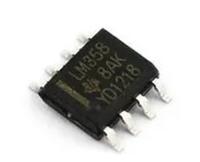| 是否Rohs认证: | 不符合 | 生命周期: | Obsolete |
| 零件包装代码: | QFP | 包装说明: | LFQFP, QFP100,.63SQ,20 |
| 针数: | 100 | Reach Compliance Code: | not_compliant |
| ECCN代码: | 3A991.A.2 | HTS代码: | 8542.31.00.01 |
| 风险等级: | 5.36 | 地址总线宽度: | 14 |
| 桶式移位器: | YES | 边界扫描: | NO |
| 外部数据总线宽度: | 24 | 格式: | FLOATING POINT |
| 集成缓存: | NO | 内部总线架构: | MULTIPLE |
| JESD-30 代码: | S-PQFP-G100 | JESD-609代码: | e0 |
| 长度: | 14 mm | 低功率模式: | YES |
| 湿度敏感等级: | 3 | 外部中断装置数量: | 6 |
| 端子数量: | 100 | 片上数据RAM宽度: | 16 |
| 片上程序ROM宽度: | 24 | 最高工作温度: | 85 °C |
| 最低工作温度: | -40 °C | 封装主体材料: | PLASTIC/EPOXY |
| 封装代码: | LFQFP | 封装等效代码: | QFP100,.63SQ,20 |
| 封装形状: | SQUARE | 封装形式: | FLATPACK, LOW PROFILE, FINE PITCH |
| 认证状态: | Not Qualified | RAM(字数): | 8192 |
| ROM可编程性: | FLASH | 座面最大高度: | 1.6 mm |
| 最大供电电压: | 3.6 V | 最小供电电压: | 3 V |
| 标称供电电压: | 3.3 V | 表面贴装: | YES |
| 技术: | CMOS | 温度等级: | INDUSTRIAL |
| 端子面层: | Tin/Lead (Sn/Pb) | 端子形式: | GULL WING |
| 端子节距: | 0.5 mm | 端子位置: | QUAD |
| 宽度: | 14 mm | uPs/uCs/外围集成电路类型: | DIGITAL SIGNAL PROCESSOR, OTHER |
| Base Number Matches: | 1 |
| 型号 | 品牌 | 替代类型 | 描述 | 数据表 |
| ADSP-2185LBSTZ-133 | ADI |
完全替代  |
IC 24-BIT, 26.3 MHz, OTHER DSP, PQFP100, ROHS COMPLIANT, MS-026BED, LQFP-100, Digital Sign |

|
| ADSP-2185LKST-133 | ADI |
完全替代  |
DSP Microcomputer |

|
| ADSP-2185LKST-160 | ADI |
类似代替  |
DSP Microcomputer |

|
| 型号 | 品牌 | 获取价格 | 描述 | 数据表 |
| ADSP-2185LBST-160 | ADI |
获取价格 |
DSP Microcomputer |

|
| ADSP-2185LBST-210 | ADI |
获取价格 |
DSP Microcomputer |

|
| ADSP-2185LBSTZ-133 | ADI |
获取价格 |
IC 24-BIT, 26.3 MHz, OTHER DSP, PQFP100, ROHS COMPLIANT, MS-026BED, LQFP-100, Digital Sign |

|
| ADSP-2185LBSTZ-1332 | ADI |
获取价格 |
DSP Microcomputer |

|
| ADSP-2185LBSTZ-160 | ADI |
获取价格 |
IC 24-BIT, 26.3 MHz, OTHER DSP, PQFP100, ROHS COMPLIANT, MS-026BED, LQFP-100, Digital Sign |

|
| ADSP-2185LBSTZ-1602 | ADI |
获取价格 |
DSP Microcomputer |

|
| ADSP-2185LBSTZ-210 | ADI |
获取价格 |
16-bit, 52 MIPS, 3.3v, 2 serial ports, host port, 80 KB RAM |

|
| ADSP-2185LBSTZ-2102 | ADI |
获取价格 |
DSP Microcomputer |

|
| ADSP-2185LKST-115 | ADI |
获取价格 |
DSP Microcomputer |

|
| ADSP-2185LKST-133 | ADI |
获取价格 |
DSP Microcomputer |

|
 LM317T数据手册解读:产品特性、应用、封装与引脚详解
LM317T数据手册解读:产品特性、应用、封装与引脚详解

 一文带你了解?DB3二极管好坏判断、参数信息、替代推荐
一文带你了解?DB3二极管好坏判断、参数信息、替代推荐

 LM358DR数据手册:引脚说明、电气参数及替换型号推荐
LM358DR数据手册:引脚说明、电气参数及替换型号推荐

 OP07CP数据手册解读:引脚信息、电子参数
OP07CP数据手册解读:引脚信息、电子参数
